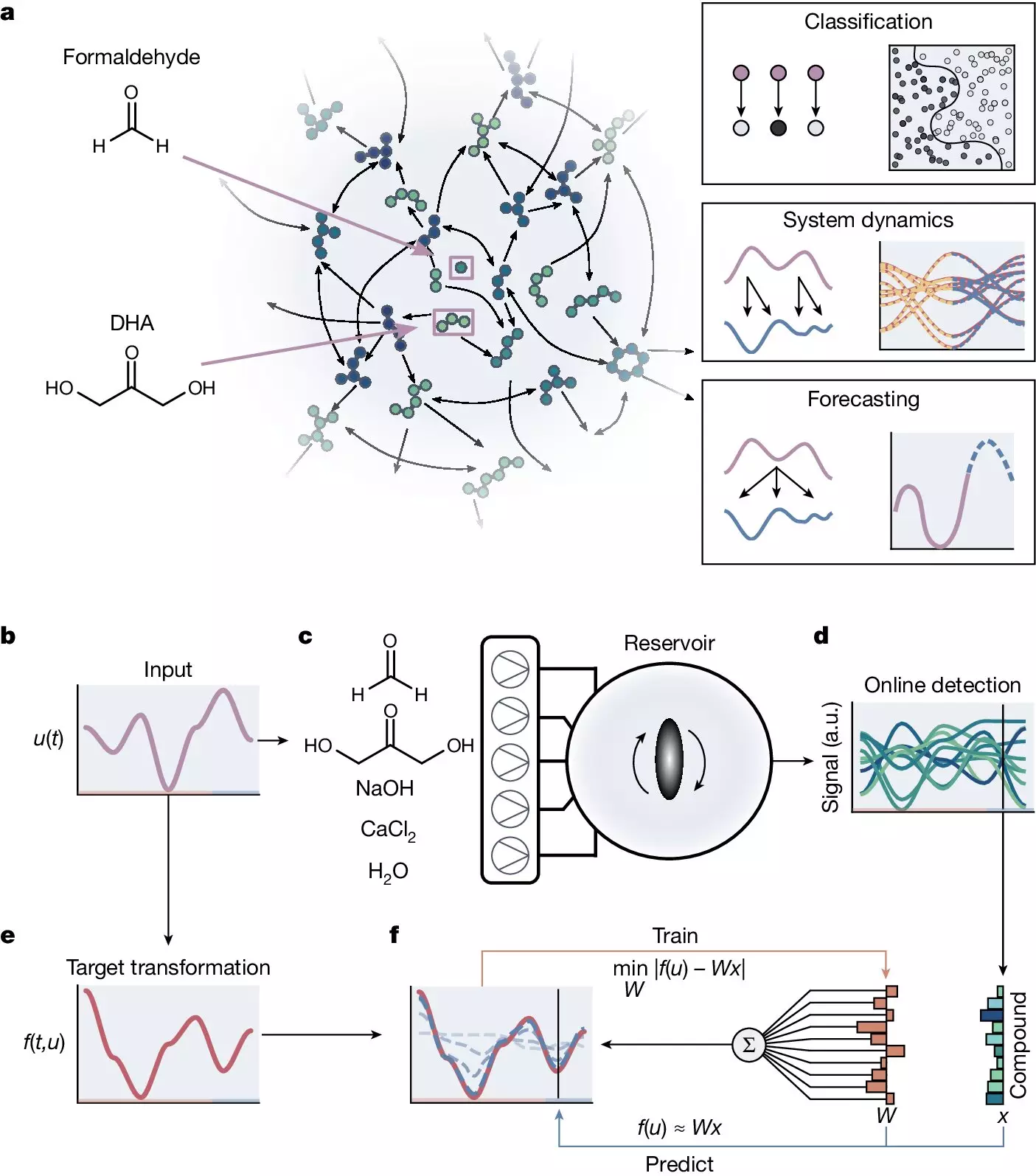Chemical and biological systems have long been of interest to researchers in the field of molecular computing. The Institute for Molecules and Materials at Radboud University, Netherlands, recently conducted a study that demonstrated the capabilities of a complex self-organizing chemical reaction network to perform various computational tasks. Led by Prof. Wilhelm Huck, the research team explored the computational power of chemical and biological systems by utilizing the reservoir computer concept. This approach involves transforming inputs into high-dimensional outputs through chemical reactions or molecular processes.
Challenges in Implementation
While the potential of molecular computing is vast, implementing it presents challenges in terms of engineering and design. Rather than attempting to engineer molecular systems to perform specific tasks, Prof. Huck and his team focused on understanding how naturally complex chemical systems can exhibit emergent computational properties. The formose reaction, known for synthesizing sugars from formaldehyde in the presence of a catalyst, was chosen for its unique properties. This reaction is characterized by a highly non-linear topology with positive and negative feedback loops, making it an ideal candidate for studying self-organizing reaction networks.
Training the System
The research team used a continuous stirred tank reactor (CSTR) to implement the formose reaction and control the input concentrations of four reactants. By modulating the reaction network’s behavior through controlled inputs, the team was able to track up to 10^6 molecules using a mass spectrometer. To enable the system to perform computations, a training step was necessary. This step involved finding a set of weights that could convert the mass spectrometer traces to the correct value of the computation. Once the reservoir computer was trained, it could compute the outcome for any new input based on the learned weights.
The reservoir computer demonstrated impressive computational capabilities in various tasks. It successfully performed nonlinear classification tasks, emulated Boolean logic gates, and predicted the behavior of a complex metabolic network model accurately. Additionally, the system could forecast future states of chaotic systems and exhibit short-term memory, retaining information about past inputs. The research team also introduced a fully chemical readout using colorimetric reactions, eliminating the need for electronic measurement devices.
The research findings suggest a new approach to molecular computing that could bridge the gap between artificial systems and the information processing capabilities of living cells. This approach opens up possibilities for creating autonomous chemical systems that can process information and respond to their environment without external electronic control. Prof. Huck and his team envision embedding reservoir computing into chemical systems that can sense their environment, process information, and take appropriate actions. The implications of this research extend to potential insights into the origin of life and advancements in neuromorphic computing.
The study conducted by the researchers at Radboud University sheds light on the potential of self-organizing chemical reaction networks in computational tasks. By leveraging the inherent properties of complex chemical systems, researchers can explore new frontiers in molecular computing and pave the way for innovative applications in various fields.



Leave a Reply